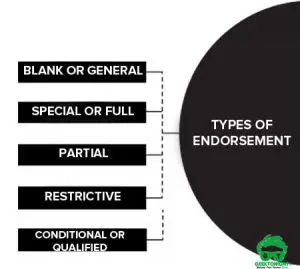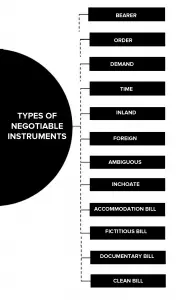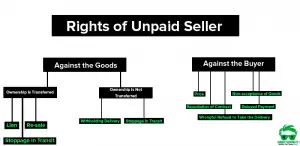The Trade Unions Act, 1926
According to the Trade Unions Act, 1926, ‘trade union’ means “any combination, whether temporary or permanent, formed primarily for the purpose of regulating the relations between workmen and employers or between workmen and workmen or between employers and employers, or for imposing restrictive conditions on the conduct of any trade or business, and includes any federation of two or more trade unions”
Table of Content
Introduction to Trade Unions Act
The origin of the passing of Trade Union Act in India was the historic Buckingham Mills Case of 1920 in which the Madras High Court granted an interim injunction against the Strike Committee of Madras Labour Union forbidding them to induce certain workers to break their contract of employment by refusing to return to work.
Trade Union leaders found that they were liable to prosecution and imprisonment for bonafide union activities and it was felt that some legislation for the protection of trade unionism was necessary.
In March, 1921, Mr.N.M.Joshi, the then General Secretary of the all India Trade Union Congress successfully moved a resolution in the Central Legislative Assembly that Government should introduce legislation for registration and protection of trade unions. But opposition from employers to adoption of such measure was so great that it was only in 1926 that Trade Union Act was passed.
Object of Trade Unions Act
The object of passing the Act was to make necessary provisions in regard to the registration of Trade Unions and to define the law relating to registered Trade Unions.
The Royal Commission on Labour in India observed that the object is to give trade unions the necessary protection from civil suits and criminal laws relating to conspiracy in order to enable them to carry on their legitimate activities.
The Act extends to the whole of India including the state of Jammu and Kashmir. It came into force on the first day of June, 1927.
Trade Dispute
A trade dispute means any dispute:
- between employers and workmen
- between workmen and workmen
- between employers and employers
Any such dispute as mentioned to be a Trade Dispute must also be associated with:
- the employment
- non-employment
- the terms of employment
- the conditions of labour of any person
The definition of Trade Dispute in this Act is almost similar to the definition of Industrial Dispute given in the Industrial Disputes Act, 1947. In Trade Dispute, it is necessary that there must be a demand from one party and refusal to accept those demands by other party. There can be real and substantial between parties to such dispute.
Trade Union
The term trade union can be expressed both in an ordinary sense and in broad sense. In ordinary sense it is a combination of workmen and in a broader sense it includes combination of employers and federation of two or more such combinations. The trade union means:
Any combination whether temporary or permanent formed for the purpose of regarding relations between
- workmen and employers
- workmen and workmen (c) employers and employers
The above combinations put restrictions on the conduct of any trade or business but certain agreements given below have been excluded from the scope of the term trade union.
- Agreement between partners in a business
- Agreement in consideration of the sale of the goodwill of a business or of instruction in any profession, trade or handicraft.
Registration of Trade Union
- Appointment of Registrars (Section 3)
- Mode of registration of trade union
- Application for Registration (Section 5)
- Rules for Registration of Trade Union (Section 6)
- Registration
- Certificate of Registration (Section 9)
- Advantages of Registration
- Cancellation of Registration (Section 10)
- Appeal (Section 11)
- Body Corporate (Section 13)
- The Objects on which General Funds may be spent (Section 15)
- Penalties and Procedure
Appointment of Registrars
As regards registration of a trade union, the Act empowers the appropriate Government to appoint a person to be the Registrar of Trade Union for each state. The appropriate Government may appoint as many additional and deputy registrar’s trade unions as it think fit.
They shall work under the superintendence and direction of the Registrar. The appropriate Government shall specify and define the local limits within which any additional and Deputy Registrar shall exercise and discharge his powers and functions.
Mode of registration of trade union
The registration of a trade union can be made under this Section 4 of the Indian Trade Unions Act, 1926 Act which says that any seven or more members of a trade union may by subscribing by their names to the rules of trade union and by otherwise complying with the provision of this Act with respect to registration, apply for registration of the trade union Trade Union Legislation under this Act.
The section also provides that in case members applying for registration disassociate themselves from the application, or cease to be members of the union, after the date of application, but before the registration of the union and their number does not exceed half of the total number of the persons applying, the application shall not be deemed to be invalid.
Application for Registration
For registration of a trade union, seven or more members of the union can submit their application in the prescribed form to the Registrar of trade unions.
The application shall be accompanied by a copy of the ‘rules of the trade union’ and a statement giving the following particulars:
- Names, occupations and addresses of the members making the application;
- The name of the trade union and the address of its head office;
- The titles, names, ages, addresses and occupations of the office bearers of the trade union as per the format given in the Trade Unions Act 1926.
Every application for registration of a Trade Union shall be made to Registrar. It shall be accompanied by a copy of the rules containing matters as given in Section 6. It also contains a statement of the following particulars.
- The names, occupations and addresses of members making the application
- The name of the Trade Union and the address of its head office; and
- The titles, names, ages, addresses and occupations of the officebearers of the Trade Union
Where a Trade Union has been in existence for more than one year before its registration, a general statement of the assets and liabilities of the Trade Union in the prescribed form must be submitted along with the application.
Registration
The Section 8 of the Indian Trade Unions Act, 1926 prescribes a duty on the Registrar to register the trade union if all the requirements of the Act with regard to registration have been complied with. The Registrar will, in such a case enter the particulars relating to the trade union in a register maintained in the prescribed form.
The Registrar has the powers to examine whether the Union is to be registered or not and after fulfilling the conditions prescribed in the Act and the Registrar will have to make the registration of the trade union.
Where that is a dispute as to who are elected office bearers of trade union, it is not within the jurisdiction of the Trade Union, to determine which of the rival group of office bearers the real one is. In the absence of any provision in the Act such dispute has to be resolved in a Civil Court.
Certificate of Registration
The Registrar, on registering a Trade Union, shall issue a certificate of registration which shall be conclusive evidence that the Trade Union has been duly registered under the Act.
It is obligatory on the part of the Registrar to register a Trade Union provided the provisions of the Act are complied with. He is not entitled to question whether the Union is lawful or unlawful.
Advantages of Registration
Although it is not legally necessary for a Union to be registered, registration does provide it with certain advantages. Some of the advantages gained by registration as given in Section 13 are as under:
- A Trade Union becomes a body corporate by name under which it is registered and it a legal entity distinct from its members of which it is composed.
- It gives perpetual succession and common seal.
- It can acquire and hold both movable and immovable property.
- It can enter into a contract.
- It can sue and be sued in its registered name.
Cancellation of Registration
Power to withdraw or cancel registration of a Trade Union is given to the Registrar. The Registrar can exercise the power in the following case, namely:
- On the application of the Trade Union for such a course
- Where the certificate of registration has been obtained by fraud or mistake
- Where the Trade Union ceased to exist
- Where the Trade Union has willfully and after notice from the Registrar allowed any rule to continue in force which is inconsistent with the provision of this Act
- Where the Trade Union has willfully and after notice from the registrar violated any provisions of this Act
- Where the primary objects of the Union are no longer statutory objects Where the Union desires to have its certificate of registration withdrawn or cancelled, the Registrar on receiving much application, must, before granting the application satisfy himself that the withdrawal or cancellation was approved by a general meeting of the Trade Union or if it was not so approved, it had the approval of the majority of the members of the Trade Union.
The Registrar is not competent to cancel registration of a Trade Union without giving requisite notice and giving an opportunity to the Trade Union to show cause against the proposed action.
Appeal
Section 11 of the Act gives a limited right of appeal from the decisions of the Registrar. Any person who is aggrieved by the refusal of the Registrar to register a Trade Union or the withdrawal or cancellation of certificate of registration is given the right of appeal. The appeal must be within 60 days of the date of which Registrar passed the order against which appeal is made.
Body Corporate
Every registered Trade Union is a body corporate by the name under which it is registered. A registered Trade Union is an artificial person in the eyes of law capable of enjoying rights like a natural person.
It has a perpetual succession and a common seal. It has the right to acquire and hold both movable and immovable property. It can enter into a contract and can sue and be sued in its registered name.
The registered trade unions (workers & employers) are required to submit annual statutory returns to the Registrar regarding their membership, general funds, sources of income and items of expenditure and details of their assets and liabilities, which in turn submits a consolidated return of their state in the prescribed proforma to Labour Bureau, Ministry of Labour Bureau, Ministry of Labour and employment.
The Objects on which General Funds may be spent
- Salaries, allowances and expenses to office bearers
- Expenses for administration and audit of the accounts of funds of the union
- Towards Prosecution or defense of any legal proceeding to which the union or its member is a party
- The conduct of trade disputes on behalf of the union or its members
- Compensation for the members at the time of dispute.
Business Law Notes
(Click on Topic to Read)
Business Law Book References
- Goel, P. K. (2006). “Business Law for Managers” Wiley
- Sheth, T. (2017). “Business Law” (2ed.) Pearson.
- Kuchhal. M.C. & Prakash. “Business Legislation for Management” (2ed.) Vikas Publishing.
Go On, Share article with Friends
Did we miss something in Business Law Note? Come on! Tell us what you think about our article on Trade Unions Act, 1926 | Business Law in the comments section.
Business Law Notes
(Click on Topic to Read)
- What is Business Law?
- Indian Contract Act 1872
- Essential Elements of a Valid Contract
- Types of Contract
- What is Discharge of Contract?
- Performance of Contract
- Sales of Goods Act 1930
- Goods & Price: Contract of Sale
- Conditions and Warranties
- Doctrine of Caveat Emptor
- Transfer of Property
- Rights of Unpaid Seller
- Negotiable Instruments Act 1881
- Types of Negotiable Instruments
- Types of Endorsement
- What is Promissory Note?
- What is Cheque?
- What is Crossing of Cheque?
- What is Bill of Exchange?
- What is Offer?
- Limited Liability Partnership Act 2008
- Memorandum of Association
- Articles of Association
- What is Director?
- Trade Unions Act, 1926
- Industrial Disputes Act 1947
- Employee State Insurance Act 1948
- Payment of Wages Act 1936
- Payment of Bonus Act 1965
- Labour Law in India
Business Law Notes
(Click on Topic to Read)
- What is Business Law?
- Indian Contract Act 1872
- Essential Elements of a Valid Contract
- Types of Contract
- What is Discharge of Contract?
- Performance of Contract
- Sales of Goods Act 1930
- Goods & Price: Contract of Sale
- Conditions and Warranties
- Doctrine of Caveat Emptor
- Transfer of Property
- Rights of Unpaid Seller
- Negotiable Instruments Act 1881
- Types of Negotiable Instruments
- Types of Endorsement
- What is Promissory Note?
- What is Cheque?
- What is Crossing of Cheque?
- What is Bill of Exchange?
- What is Offer?
- Limited Liability Partnership Act 2008
- Memorandum of Association
- Articles of Association
- What is Director?
- Trade Unions Act, 1926
- Industrial Disputes Act 1947
- Employee State Insurance Act 1948
- Payment of Wages Act 1936
- Payment of Bonus Act 1965
- Labour Law in India







